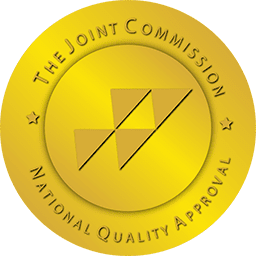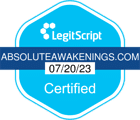Is Xanax® A Narcotic?
No, Xanax® is not a narcotic. Xanax® is a benzodiazepine prescription medication prescribed to treat anxiety and depression. It is classified as a Schedule IV controlled substance but is not a narcotic. Despite the lack of opioids and Xanax®, it can still lead to developing dependence and misuse.
Xanax® Drug Facts
Alprazolam is the active ingredient in this benzodiazepine drug for which Xanax® is the brand name.[1] Benzos are Central Nervous System (CNS) depressants, also known as “downers.” The effects of Xanax® reduce nervous system stimulation and brain activity to create a sense of calm and relaxation.
Due to its nature as a benzodiazepine, Xanax® interacts with the brain and alters standard functions. Even though Xanax® is not a narcotic, if prescribed for long-term use, patients can still develop a physical or chemical dependence on the substance, which can eventually lead to misuse.
Xanax® Vs. Narcotics: What Is The Difference?
Xanax®, or alprazolam, is a benzodiazepine medication for anxiety and depression. On the other hand, narcotics are opioid-derived pain medications.
While usually prescribed to calm the mind for anxiety sufferers, some may experience pain relief due to taking Xanax®. It can relieve muscle tension and pain in the same way that it relaxes the brain.
There are natural opioids derived from the poppy plant and synthetic opioids created in a lab. Opioid narcotics include Vicodin®, codeine, morphine, methadone, OxyContin®, and fentanyl.[2]
Can You Mix Xanax® and Narcotics?
No. Mixing Xanax® with narcotics or prescription opioids can lead to serious side effects and health concerns. Xanax® should also not be taken with alcohol or any other substance. Always consult your provider before mixing substances or making any medication adjustments.
What The Xanax® Classification Actually Means
Substance classification is controlled by the Drug Enforcement Administration (DEA) and informed by The Controlled Substances Act (CSA). The CSA law classifies all controlled substances on a scale of one to five.
Xanax® is a Schedule IV controlled substance which means it is somewhat less likely to lead to dependence and misuse.[3] This classification also includes all other benzodiazepines like Ativan®, Ambien®, Valium®, Tramadol®, Ativan®, and Xanax®.
Schedule I Controlled Substances
Schedule I drugs are substances with no approved or acceptable medical use with a high likelihood of misuse. Substances in this class include ecstasy, LSD, and marijuana.
Schedule II Controlled Substances
Schedule II drugs with a high likelihood of abuse and the potential to lead to psychological issues. This classification of drugs is considered dangerous and includes fentanyl and other opioids, cocaine, methamphetamine, Adderall®, and Ritalin®, among others.
Schedule III Controlled Substances
Schedule III drugs have a moderate to low possibility of misuse or developing psychological issues. To be classified as a Schedule III substance, it must contain less than 90mg of a higher-level substance like testosterone, codeine, anabolic steroids, ketamine, and Suboxone®.
Schedule V Drugs
Schedule V drugs are the lowest classification and least likely to cause dependence or lead to misuse. These medications are prescribed for medical use and would contain only preparation amounts of narcotics. This classification includes drugs like cough syrups and Lyrica®.
Additional Xanax® Facts: Side Effects, Withdrawal, Health Risks, and Treatment
What Does Xanax® Treat?
Primarily, Xanax® is prescribed to treat anxiety and panic disorders but has been proven effective at alleviating the symptoms of depression and other mental health disorders, including:
- Post Traumatic Stress Disorder (PTSD)
- Convulsions and Seizures
- Agoraphobia
- Sleep disorders like insomnia
- Panic disorders
There are also several subcategories of anxiety that Xanax® may be prescribed for.
- Flight anxiety
- OCD
- Bipolar Disorder
Understanding Xanax® Side Effects
 The positive side effects of Xanax® cause a sense of calm and relaxation helpful in reducing symptoms of anxiety or panic disorders. However, as with any prescription medication, there are often other side effects associated with the drug, such as:
The positive side effects of Xanax® cause a sense of calm and relaxation helpful in reducing symptoms of anxiety or panic disorders. However, as with any prescription medication, there are often other side effects associated with the drug, such as:
- Sleep disruption
- Agitation and irritability
- Difficulting focusing
- Drowsiness, or conversely, insomnia
- Changes in eating habits
- Nausea
- Headaches
What are Xanax® Withdrawal Symptoms?
Due to the chemical interaction of Xanax®, it is possible to experience withdrawal symptoms when you stop taking Xanax® suddenly. Even when taken as prescribed, if one is not tapered off of Xanax® with a taper schedule organized by your psychiatrist or doctor, some of the following symptoms may become present.
- Increased symptoms of anxiety
- Increased symptoms of depression
- Insomnia
- Disassociation
- Panic attacks
- Changes in appetite
- Tremors, seizures, and muscle spasms
- Sweating
- Light sensitivity
- Shortness of breath or hyperventilation
- Psychosis and hallucinations
Long-Term Risks Of Xanax® Use
In most cases, Xanax® is not prescribed for long-term use. However, in some more serious cases, psychiatrists may deem that this is the most appropriate path and in the best interest of the patient. In these circumstances, there may be other health risks to consider when faced with long-term Xanax® use.
- Reduced memory function
- Impaired judgment
- Physical weakness
- Lack of balance and frequent falls
- A sense of feeling disoriented or confused
- Reduced sex drive
- Systemic itchiness
- Menstrual issues
- Increased risk of developing Alzheimer’s
Xanax® and Narcotic Treatment Options
Even though Xanax® has a low probability of leading to misuse, it still has the propensity to cause dependence. Even if you’re prescribed the medication for medical use, there may come a time when a lower dose is needed, or you’re ready to taper off the drug altogether.
It can often be difficult to navigate the early detox and withdrawal stage that may come with long-term Xanax® use. However, beginning treatment with a well-respected and evidence-based individualized treatment program can set you up for lifelong recovery.
When dealing with narcotics or opioid use disorder, the early detox and recovery phase may be even more challenging. The withdrawal symptoms associated with narcotics tend to be stronger and last longer, and the drug cravings are often more acute.
Treatment for Xanax® and narcotic use often begins with a medical detox or a taper schedule. During this time, you will be medically supported as you navigate the early stages of withdrawal symptoms with medication-assisted treatment and holistic interventions.
The next progression of treatment is a Partial Hospitalization Program (PHP) which is a multi-day program that takes place for several hours each day. Here you will receive intensive care and treatment based on your unique needs.
The next level of care is an Intensive Outpatient Program (IOP) with a less restrictive schedule and the same in-depth treatment for several days per week. An Outpatient Program (OP) would be the follow-up treatment plan that offers ultimate flexibility while still receiving weekly support and relapse prevention strategies.
It’s important to remember that each client’s recovery journey will be unique. With an individualized treatment plan, substance use in mental health providers can help you set a foundation for long-term success.













